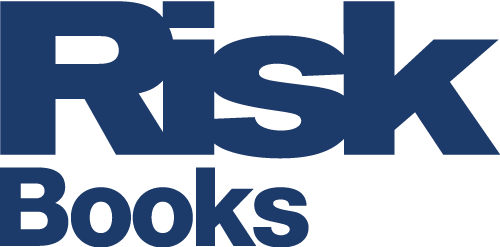A Guide to Equity Index Construction
Equity indexes must be constructed by a defined set of transparent rules. This accessible handbook provides clear guidelines and critical insight into the science and methodology of index construction.
Equity indexes out-perform the majority of active fund management strategies. Not only will this book teach the reader to construct an optimal index, but it will also assist fund managers to ’know their enemy’.
Index construction is an important scientific process. There are now estimated to be 14 trillion Euros of equities under professional management, and theory suggests that these funds should have an appropriate benchmark in order to match assets and liabilities.
A Guide to Equity Index Construction presents readers with an independent explanation of the processes of methodical index construction. It also addresses the inefficiencies in the construction process that could potentially be exploited by active managers, or those wishing to refine the process, in order to create better indexes in the future.
Documenting best practice and keeping mathematical formulae to a minimum, this guide provides a straightforward set of rules and all the tools and techniques you will need to construct an equity index.
With over 20 years experience in the fund management industry, author Daniel Broby, presents a clear and workable methodology and:
- equips you with the skills to construct an optimal index;
- debates the issue of an appropriate benchmark for equity funds;
- shows the link between the CAPM and index construction;
- helps you to understand the nature of the underlying return series;
- makes better fund managers out of active managers through an improved understanding of benchmark construction;
- enables you to differentiate between the myriad of derivative and synthetic ways to gain exposure to an index.
This powerful reference manual is recommended for fund managers, index constructors, quantitative analysts, risk analysts, CIOs, institutional relationship managers, financial journalists, finance students and academics.
| ISBN | 9781904339779 |
|---|---|
| Navision code | MGEI |
| Publication date | 2 Apr 2007 |
| Size | 155mm x 235mm |
Dr. Daniel Broby
As a senior figure in the asset management industry, Daniel Broby is a champion of capital markets. His focus on high level principals, integrity and best practice underlie his professional success.
Daniel built his career on the back of a strong grounding in finance theory. He has an MPhil in economics and an MSc in investment analysis. He was elected an individual member of the London Stock Exchange in 1990; is a Fellow of Chartered Institute of Securities and Investment; a Fellow of CFA UK; and a Visiting Fellow at Durham University. He was presented with the CFA Institute’s Society Leader Award in 2006.
Daniel has had a number of C’ level positions at the largest asset managers in Scandinavia and Russia. These include chief executive officer, chief investment officer and chief portfolio manager. His career, however, has revolved around the London market. He was a board member of CFA UK, and it predecessor, for over 10 years.
Daniel’s focus has always been active asset management. His success in investment performance was recognised by Morningstar who rated the flagship fund he managed for eight years with five stars
Daniel has pioneered a number of investment solutions. He introduced the first regulated hedge fund and pioneered structured products in the Danish market. He has launched various investment funds, including a number focused on frontier markets such as Africa.
Daniel has written two highly recognised books on the profession and numerous articles for industry journals. He was commissioned by the Financial Times to write The Changing Face of European Fund Management.
Daniel has also contributed to the body of financial knowledge by writing A Guide to Equity Index Construction for Risk Books. Securities & Investment Review observed that it “explores in intricate detail the various workings of modern portfolio theory, choosing a benchmark, measuring risk and sampling and selection procedures.“ Professional Investor magazine opinioned that “rarely does a book genuinely represent a first in its field."
Table of contents
Introduction
1. The Index and Modern Portfolio Theory Introduction
Defining the terms benchmark and index
Defining efficiency
Background
A brief history of equity indexes
Capital asset pricing model
The three-factor model
This book is focused on the practical
The way forward
Conclusion
2. Which benchmark?
Introduction
Levelling the playing field
Capturing “systematic“ returns
Choosing between arithmetic and geometric approaches
Benchmark methodology: total capitalisation method
Benchmark methodology: price-weighted method
Benchmark methodology: equal weighted method
Should the benchmark adjust for “free float“
The importance of brand
Case Study: choosing a benchmark index for the Norwegian Petroleum Fund’s equity investments
Conclusion
3. Taking risk into account
Introduction
Volatility and variance as risk proxies
Background
Risk and the efficient frontier
Being careful not to take on too much beta
Avoiding alpha risk
Over-reliance on the index
No garden is without weeds
Risk is a function of the economy
The equity risk premium
Other risk considerations
Case study: What risk premium is normal?
Conclusion
4. The efficiency of the Benchmark index
Introduction
Efficiency as a moving target
Efficiency and the economy
Pricing efficiency
Operational efficiency
The benchmark as a proxy for the market portfolio
Issues with achieving a pure market proxy
Free float and index efficiency
Roll’s critique of the use of a benchmark
Testing benchmark efficiency
What if fund managers outperform the index?
Tracking error as a measure of efficiency
Active share as a measure of efficiency
The candidate index problem
Case study: The S&P500 - the investor’s choice of benchmark proxy
Conclusion
5. Sampling and selection procedures
Introduction
Construction methodology
Advanced estimation techniques
The starting point - the base date
The zero-one integer problem
The index divisor
Estimating the key characteristics
Creating rules
Random sampling
Stratified sampling
Apportioning stock weights and the depth of an index
Number of stocks in an index
Size of company in the index
Fixed-share capitalisation indexes
Determining the free float adjustment
Provisional indexes
Which countries to include
Which industries to include
Volume considerations
Fundamental ratios
Short positions
Case study: The MSCI and S&P-IFCI treatment of Korea and Taiwan
Conclusion
6. Establishing statistical method
Introduction
Descriptive statistics
Correlations
Cluster analysis
Tables and graphs
Creating a matrix
Simple aggregate unweighted index
Arithmetic Indexes
Geometric Indexes
Which methodology to use - arithmetic or geometric?
Unbiased averages
The Laspeyres index
Paasche index
Fisher index
Marshall-Edgeworth index
Tornqvist index
Carli elementary price index
Dutot elementary price index
Jevons elementary price index
Chain linking
Backtesting
Potential Bias
Case study: The FTSE Mediterranean 100
Conclusion
7. Making the index investable
Introduction
The key determinants of investability
Trading costs’ impact on investability
Market impact
Bid-ask spread
The impact of futures and options on investability
Rising liquidity
Privatisations and new issues
What size is investable?
Length and timing of trading
Size capitalisation and investability
Free float and investability
Client investability requirements
Case study: Bulgaria - an illiquid emerging market
Conclusion
8. Collection and Processing of Data
Introduction
Clean data
Data preparation
Data requirements
Static data
Dynamic data
Building the database
Common errors
Public information
Common aggregating services
Direct exchange price feeds
Corporate actions
Coping with data volatility
Issuer name
Description
ISIN
CUSIP
SEDOL
ISO
Survivorship bias
Case study: Establishing a historic data series in France
Conclusion
9. How to Handle Industries
Introduction
What is an industry?
Standard Industrial Classification
Global Industry Classification Standard
Industry Classification Benchmark
Fama and French Industrial classification
Industrial change
Herfindahl index
Creating a sector-neutral index
Consumer-goods industry - non-cyclical
Consumer goods industry - cyclical
Healthcare
Financial sector
Technology
Basic industrial sectors
Basic equipment industry
Telecommunication services
Utility services
Changing industry
Case study: A specialist sub index - the Macquarie Global Infrastructure Index (MGII)
Conclusion
10. How to Handle Factor Exposure
Introduction
The arbitrage pricing model
Should factors be used in benchmark construction?
Single or multiple factors
Economic factors
Fundamental factors
Country and sector factors
Growth and value factors
Non-linear-style probability
Size factors
Interest rate factors
Country factor exposure
Integration, covariation and correlation
Conditional versus unconditional models
Undertaking factor analysis
The P8 portfolio test
Case study: A style index - S&P500/Citigroup Value Index
Conclusion
11. How to Handle Countries and Currencies
Introduction
Countries and the CAPM
International CAPM
Domicile
National history
Home country bias
National industry clustering
Increasing integration
Time zone
Defining developed markets
Defining emerging markets
Multi-currency indexes
The major currencies
The minor currencies
Overcoming cross-border capitalisation bias
EAFE
Supranational constraints
Foreign ownership limits
Dual listings
Case study: The MSCI World
Conclusion
12. Maintenance
Introduction
Rebalancing frequency
Downward-sloping demand-curve hypothesis
Liquidity hypothesis
Information content hypothesis
How radical should changes be?
Turnover
Avoiding bias
Applying optimisation techniques
Index committee
Removing companies
Takeovers
Financial operating failure
Initial public offerings
Correlation breakdown
Silent indexes
System design
Case study: FTSE Policy Group and Equity Indexes Committee
Conclusion
13. The Commercial indexes
Introduction
Competitive dynamics
Differences in construction
The S&P/Citigroup equity index
Case Study: Differences in European indexes
Conclusion
14. Bespoke indexes
Introduction
Reasons for adopting a custom index
Users of custom indices
The politics of forming a new bespoke index
Multinational indices
ADR or synthetic equity indexes
Tax adjusted
Case study: Differing approaches to Socially responsible Investing
Indexes on Bloomberg
Using Bloomberg to build a custom index
Conclusion
15. Tying it all together
Introduction
The key lessons
Important characteristics of good indexes
Practical application of the lessons learnt
Investors as users of indexes
Areas for further consideration
References


